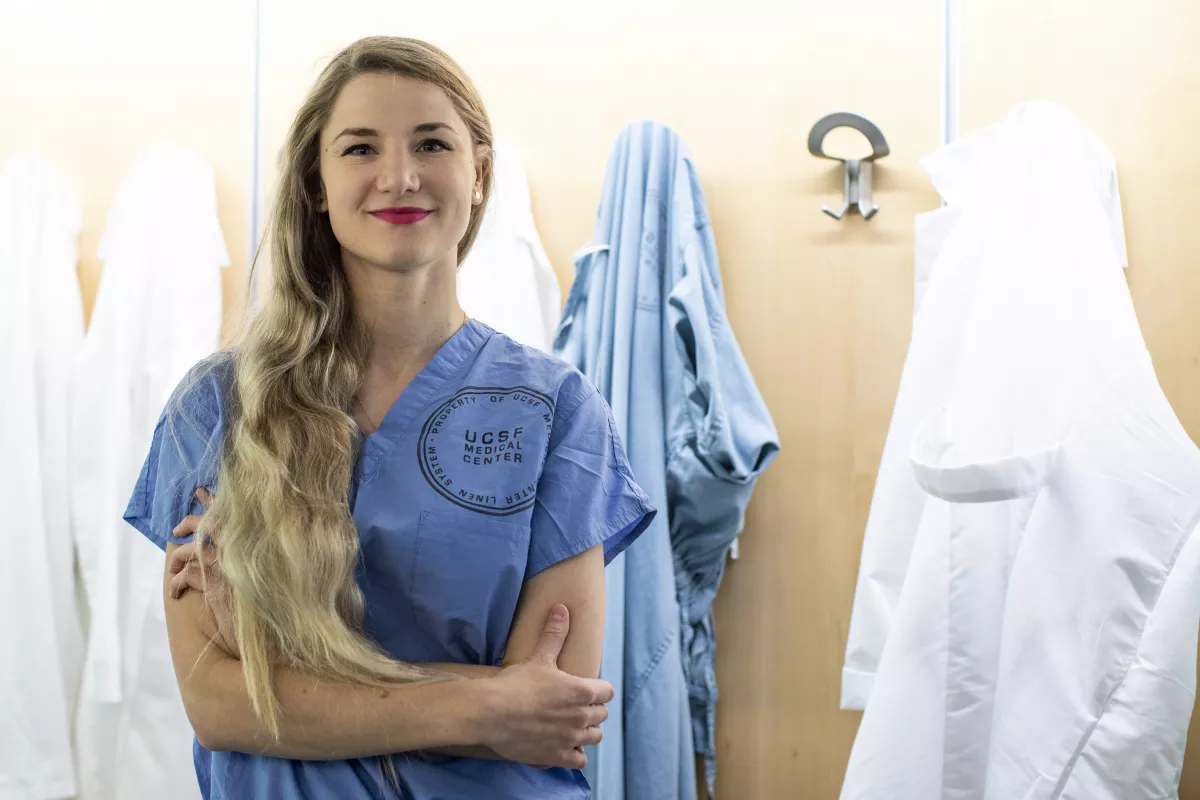For UCSF medical student Beata Durcanova, her recent transition to peripheral nerve research was somewhat unexpected. Durcanova, who was born in Slovakia and moved to the Kentucky when she was 15 years old, has been studying, teaching, and researching neuroscience for many years. However, like most neuroscientists, her prior work focused on the central nervous system rather than the peripheral nervous system.
It was neurosurgeon Line Jacques, MD, Chief of Peripheral Nerve and Pain Surgery at UCSF, who first introduced Durcanova to the peripheral nerve specialty. Hearing about Jacques’ work, Durcanova was immediately drawn to the opportunities in this growing field.
“It’s not just the fascinating anatomy and complexity – it’s the fact that patients with peripheral nerve damage have chronic pain, which is incredibly debilitating and degrades their quality of life on every level,” said Durcanova. “I’d like to be part of the effort to change that.”

Now, Durcanova is conducting peripheral nerve research with Jacques’ mentorship. Together, they aim to determine which surgical repair techniques result in the best form of regeneration for sensory nerves.
The three surgical options for peripheral nerve repair (autograft, allograft, and direct end-to-end repair) have been researched extensively in the context of motor nerves, but not sensory nerves – even though the peripheral nervous system is comprised of both. Currently, repair of sensory nerves is not standardized.
To rectify this, Durcanova will use histological and functional assays in a rat model system to assess the extent of sensory nerve regeneration for each method of surgical nerve repair. Given differences in the physiology and way sensory and motor neurons are supported, there is reason to believe that rates of regeneration may differ. A deeper understanding of sensory nerve regeneration may impact standard of practice in the future, for example, if sensory nerves require a more advanced type of repair.
Pending the results of their current study, Durcanova and Jacques may extend their findings to other types of injury and nerve locations to determine the best nerve technique for different situations. Ultimately, they intend to evaluate sensory nerve repair in the clinical setting, to assess patient outcomes for each repair technique.
“There’s a lot of room for improvement in the way that we treat peripheral nerve disorders,” said Durcanova. “I’m really looking forward to the future where more people are working in this field, so we can make more advances.”
Durcanova, who is completing a research year before her final year of medical school, plans to become a peripheral nerve surgeon and continue expanding on her work. “This is a patient population who is really suffering. It’s a very real thing for many of these patients who have disability and lost quality of life due to peripheral nerve damage," said Durcanova. "That’s where my motivation comes from.”
Learn more about surgical treatment for peripheral nerve disorders at UCSF.
